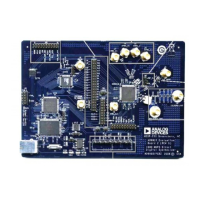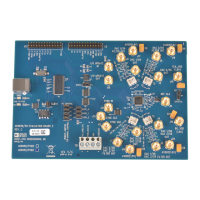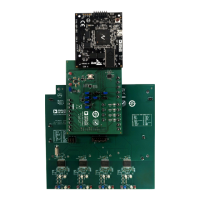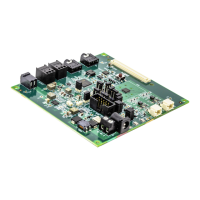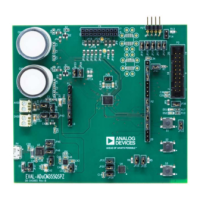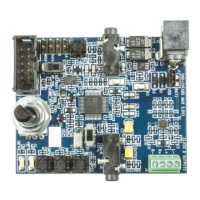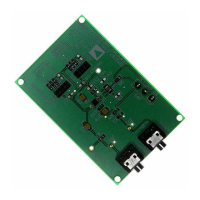UG-570 AD9361 Reference Manual
| Page 46 of 128
When comparing the signal power with the energy lost threshold,
there is also a time factor as well. Each time the signal power
value updates, the AGC computes the difference between the
power measured at the beginning of gain lock and the current
signal power. This difference is compared against the Energy Lost
Threshold. If the difference exceeds the threshold for a time equal
to twice the Gain Lock Exit Count then the gain unlocks as
shown in Table 24. The Gain Lock Exit Count is clocked at the
ClkRF rate. The same comparison is made for the Stronger Signal
Threshold, which appears in Table 26.
The large ADC threshold is stored in Register 0x105 and the large
LMT threshold is stored in Register 0x108. For the peak
detectors, there are no time requirements. A single overload will
unlock the gain.
Generally, the AGC is the best arbiter of when the gain should
unlock. However, in some situations, it may be advantageous for
the BBP to initiate an unlock condition. If the BBP pulls the
EN_AGC pin high, the gain will unlock and the AGC algorithm
will restart. The BBP cannot force the gain to lock at a certain
time but it can control when the gain unlocks. Table 25 shows
how to use this feature.
If the thresholds are set correctly, the typical setup which unlocks
the gain when the AD9361 exits Rx mode or if the burst/subframe
ends is sufficient for most applications. However, if desired, it is
also possible to prevent the gain from unlocking in some
instances (see Table 26). The settings are dependent on whether
the BBP will use the EN_AGC pin to unlock the gain. If this is the
case, then the EN_AGC pin should be low except when the gain
should be unlocked. If the EN_AGC pin is not used, then the
Gain Lock Delay bit must be set high.
Table 25. Full List of Gain Unlock Conditions vs. Target Gain Index
Condition that Unlocks the Gain Gain Index Type Set Bits Clear Bits
EN_AGC pulled high Maximum gain 0x0FB[D6], 0x111[D5] 0x110[D6:D5]
EN_AGC pulled high Optimize gain 0x0FB[D6], 0x110[D6], 0x111[D5] 0x110[D5]
EN_AGC Pulled high No gain change 0x0FB[D6] 0x110[D5], 0x111[D5]
Table 26. Preventing Gain Unlock Conditions in State 5
If EN_AGC Pin Is Used Don’t Unlock Gain Even If: Set Bits
No Energy Lost Threshold Exceeded 0x0FB[D6], 0x014[D1], 0x110[D3]
No Stronger Signal Threshold Exceeded 0x0FB[D6], 0x014[D1], 0x115[D7]
No Large ADC or Large LMT Overload 0x0FB[D6], 0x014[D1], 0x110[D1]
Yes Energy Lost Threshold Exceeded 0x0FB[D6], 0x110[D3]
Stronger Signal Threshold Exceeded
Yes Large ADC or Large LMT Overload 0x0FB[D6], 0x110[D1]
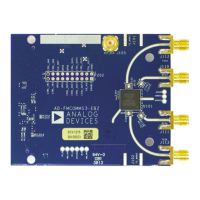
